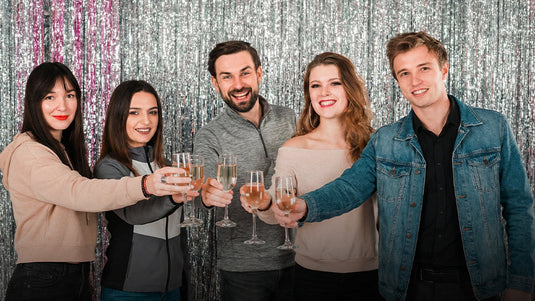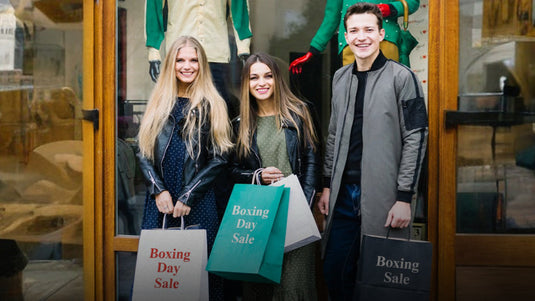 Learn the art and science of color selection in fashion. It's so much more than a trend; it's how you use a shade to make yourself look greater or not. Common pitfalls of color selection include clashing tones and mismatched color palettes. Learning about color theory will help dispel misconceptions that you may have about colors and give you confidence in your choices. Transform your wardrobe and avoid common mistakes with our comprehensive color selection guide below.
Learn the art and science of color selection in fashion. It's so much more than a trend; it's how you use a shade to make yourself look greater or not. Common pitfalls of color selection include clashing tones and mismatched color palettes. Learning about color theory will help dispel misconceptions that you may have about colors and give you confidence in your choices. Transform your wardrobe and avoid common mistakes with our comprehensive color selection guide below.The Power of Color in Fashion
Color Selection in Apparel is crucial when it comes to fashion, impacting emotions and perceptions. Designers use it strategically to evoke feelings. Red boosts confidence, blue promotes calmness. Understanding color psychology in fashion allows for personal style elevation and confidence.
The Impact of Color on Personal Style
Colors are an unspoken language-a commentary to the outer world about your personality and mood. Colors can influence moods and self-confidence. Those that you like to wear have the ability to make you happy and the ones you don't like will make you self-conscious. Colors, if chosen with a lot of thoughtfulness, will develop a style particularly suiting and fitting you best.
Why Choosing the Right Color Matters
The question of color in your wardrobe is other than aesthetic preference; it's about what other people will think of you. The shirts with an upright color enhance your skin tone and high-line your features, while the wrong ones wash you out. Knowing your preferences, you'll be able to build a wardrobe that looks great and boosts confidence.
Common Color Selection Mistakes and How to Fix Them
One of the biggest mistakes people keep making for Color Selection in Apparel is when it involves skin tone. It is so easy to get swept away by trends or that gorgeous shade of blue you saw on Instagram, but if it is not a color to complement your natural skin color, it just won't work. The key is finding those new arrivals colors that do something for your skin and make you glow and feel confident.
Ignoring Skin Tone: Finding the Right Shades for Your Complexion
With an idea of skin tone, therefore, one will choose colors that look good with their skin tone. Warm tones have yellow undertones, cool tones have pink undertones, and neutral tones are both mixed.
Warm vs. Cool Undertones
Determining undertone is challenging, but check wrist veins for blue or green hues, and gold/silver jewelry preference for warm/cool tones.
Testing Colors Against Your Skin Tone
Identify undertones, test colors on skin in natural light. Find hues that enhance your beauty. Trial and error will make you a color-matching pro.
Overlooking Occasion and Setting: Color Selection in Apparel
It's also important to choose your outfit colors, because they will make you happy or sad, or show you off to the world in a different light. Whether it's a wedding, a business meeting, or brunch-all those color palettes will elevate your look and leave a mark.
Daytime vs. Evening Wear
Colors are different for daytime and evening wear. Daytime wear should be as bright as the sun, with light pastel colors like soft pink and light green. The opposite is true for evening wear, which should be made of richer, darker tones, like emerald green and royal blue, for that sophisticated and elegant look.
Professional vs. Casual Settings
Color choice reflects the environment. In professional settings, gray, navy, and black exude confidence. Casual settings allow for personal expression with bright shades Shorts and fun patterns. Match colors to settings for enhanced presence.
Following Trends Blindly: When to Stick with Timeless Colors
Where fashion is concerned, it is better to stick to those eternity shades: black, white, navy, and beige. These classic shades provide a great base for everything and have anyone who sports them look polished and put together in an instant without having to update their wardrobes constantly.
Trend vs. Personal Style
Fashion is a lot deeper than just following the latest trends; it's about expressing one's own style, which is all about feeling at ease and secure. Achieve equilibrium among acknowledging the trend and remaining true to your identity. While opting for the right color of your actual Sweatshirts & Hoodies, decide what flatters you.
Building a Versatile Wardrobe
Building a versatile wardrobe requires timeless colors and classic styles as staples. Add trendy pieces that can mix and match with the basics. This ensures a wardrobe ready for any occasion, expressing your style confidently.
Neglecting Fabric and Texture: How Color Changes with Material
Fabric and texture of clothes are quite important in the manner colors appear. Indeed, different materials absorb light and reflect light in different ways, hence giving a different hue effect of a color. Knowing this impact will help you improve your fashion sense and maintain the atmosphere you want to reflect.
The Effect of Fabric on Color Perception - Color Selection in Apparel
The fabric choice impacts color perception. Shiny fabrics like satin intensify colors, ideal for special events. Matte fabrics like cotton soften colors for a casual look. Textured fabrics like corduroy add depth and richness to colors.
Choosing Colors That Complement Fabric Types
It's important to choose colors for your wardrobe that complement the fabric type. Consider earthy tones like olive green for chunky knits and bold colors for lightweight fabrics. Choose colors from our sale that work well with the fabric for stylish and timeless outfits.
Mastering Color Combinations: Color Selection in Apparel
- Start with the color wheel: Understanding how colors relate to each other helps in putting together harmonious combinations.
- Stick to a color scheme: Too often, an outfit looks better if it's only out of a few colors rather than too many.
- Experiment with contrasts: You can either play with the light and dark shades Pants or play with the combination of warm and cool tones.
- Consider the occasion: Different color combinations work better for casual, formal, or professional settings.
- Don't be afraid to mix patterns: Pairing colors from different patterns can create a fun and unique outfit.
Monochromatic Magic: Creating Elegant Looks with One Color
Choose varying shades:
Adding a mix of light and dark tones to your monochrome outfit adds dimension.
Play with textures:
Apart from these, incorporating different textures such as silk, knit, or leather can save a single-color outfit from looking flat.
Use accessories wisely:
Contrasting-colored accessories can provide interest and break up a monotone ensemble.
Experiment with different hues:
The most important thing is to mix different tones of the same color to create a professional monochromatic look.
Keep it simple:
Looks that are monochromatic can be effortlessly stylish, so don't overdo the color and let it take center stage.
Analogous Color Schemes: Easy Ways to Blend Colors
Stick to neighboring colors:
Looks that are monochromatic can be effortlessly stylish, so don't overdo the color and let it take center stage.
Create a gradient effect:
You can create a smooth, harmonious transition from one analogous color into another.
Experiment with different intensities:
Play with light and dark shades of analogous colors for added depth in your outfit.
Use a dominant color:
Choose one color to be your focus, the others an accent to make this work.
Balance warm and cool tones:
Mixing warm and cool analogous colors creates quite a nice juxtaposition.
Bold and Bright: Combining Vibrant Colors Successfully
Start with a statement piece:
Choose one bold color that's the point of your outfit and build on it.
Mix complementary colors:
Pulling together colors opposite each other on the color wheel will create a striking look.
Use color blocking:
Playing with blocks of vibrant colors adds a playful, modern touch to your outfit.
Opt for color pops:
Adding small doses of bright color through accessories or accents gives an added pop of vibrancy.
Balance with neutrals:
These neutral tones can be put together with bold colors to dim the brightness and keep it all in balance.
Neutrals and Accents: Color Selection in Apparel
Start with a neutral base:
Black, white, beige, and gray are examples of neutral colors that can act as the basis for an ensemble.
Add a pop of color:
Incorporating a bright or bold accent color can instantly liven up a neutral ensemble.
Combine various textures:
Adding a layer of Jackets in muted colors can give your ensemble more depth and appeal.
Utilize metallics for play:
Accents in gold, silver, or bronze can give a neutral ensemble a sophisticated lift.
Try out some tonal dressings:
You can achieve a stylish and well-put together look by wearing various tones of the same neutral hue.
Practical Advice: Color Selection in Everyday Fashion
Consider your skin tone:
Certain hues can improve your overall appearance and go well with your skin tone.
Combine neutral hues:
With splashes of color your ensemble interests without becoming overpowering.
Play with color blocking:
Experiment with different color combinations by strategically blocking colors in your ensemble.
Accessorize with color:
Use belts, shoes, and scarves as accessories to add playful bursts of color to your ensemble.
Try new things without fear:
Fashion is all about expressing oneself, so don't be scared to combine different hues to create one-of-a-kind ensembles.
Building a Balanced Wardrobe: Essential Colors for Versatility
Invest in neutrals:
The cornerstones of every adaptable wardrobe are neutral colors like beige, white, navy, and black.
Add a touch of color:
Add classic colors-red, blue, and green-that will go well with neutrals and complement and mix easily.
Consider your lifestyle:
Choose colors that align with your daily activities and personal style to ensure practicality.
Think about versatility:
Opt for colors that can transition seamlessly from day to night and work for various occasions.
Quality over quantity:
Concentrate on well-made items in a select few primary hues that you may combine to create a variety of looks.
Seasonal Color Trends: Changing Up Your Color Scheme All Year Long
Stay informed:
Watch the fashion trends and color forecasts for an update on the latest seasonal color palette.
Transition with accessories:
Bring new life into your look each season by incorporating accessories in seasonal colors.
Layer with complementary colors:
Combine pieces from your current collections with seasonal hues to create chic, contemporary ensembles.
Experiment with unexpected combinations:
Mix and match the seasonal colors in the most unsuspecting ways without fear; that is what truly defines a fashion-forward look.
Final Words:
Making one's way through the tapestries of the fashion world requires an ability to get along with every color in the color spectrum, where the shades you pick create a signature about you. The moment you come into the limelight, let your wardrobe be eyeball searing-extravaganza, commanding attention and respect.
Our blog aspires to be your guide in this chromatic journey, offering insights into selecting a perfect palette while avoiding common pitfalls. Learn to play the fine art of color matching and contrast for those perfect ensembles that scream for attention, exuding elegance and individuality. So, go ahead, wear your favorite colors, and let your style be the conversation starter as every head turns.


